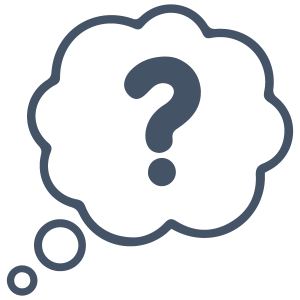Week 5: Evaluating sources II
Academic, popular, news, and social media sources

Overview
Last week we learned that sources can be categorized in many different ways, including by the author and context for which it was created. This week, we will learn how to categorize sources by content and audience.
Academic, popular, news, and social media sources are categories that identify sources in terms of the content (the information presented) and audience (individuals or groups for which the information is intended).
Categorizing sources is an important step in the process of evaluating sources to determine if they are appropriate for a given research task. In addition, it is also important to understand what types of sources we could use and in what context.
Typically, your instructor will identify the types of sources that are required for a given academic project. When you are searching for sources, you must understand the type of source you are required to use and differentiate between the various sources you find during your information searches so that you choose the right types of materials for your project.
We will also discuss another strategy for reading academic sources. You are already engaged in pre-reading (before class) and re-reading (after class) sources. Now, we will take re-reading one step further and discuss the strategy of close reading. Close reading is an effective approach to re-reading sources to ensure that you understand the key concepts and arguments of the materials you are reading–both for class and for your summative project, the literature review.
Readings
Section I: Types of sources
Booth, W. C., Colomb, G. G., Williams, J. M., Bizup, J., & Fitzgerald, W. T. (2016). The craft of research (4th ed.). University of Chicago Press.
-
Chapter 6: Engaging with sources (pp. 85-104)
Section II: Reading academic materials
California State University: Dominguez Hills. (n.d.) Anatomy of a research article. https://libanswers.csudh.edu/loader?fid=12986&type=1&key=27f96ac907c2a26c1ad28530a6c3a2f6
Edwards, P.T. (n.d.) How to read a book. http://www.cs.yorku.ca/~aboelaze/howtoread.pdf
GVSU Libraries Instruction. (2019, Nov. 18). Annotating an article [Video]. Youtube. https://youtu.be/JtRGUNo2pck
Kuhlthau, C. (2008). From information to meaning: Confronting challenges of the twenty-first century. Libri (København), 58(2), 66–73. https://doi.org/10.1515/libr.2008.008
Serrani, A. Annotation examples simply explained. YourDictionary. https://examples.yourdictionary.com/annotation-examples.html
Section III: Choosing sources
Maccallum, L. (2020). Choosing and using sources: A guide to academic research. (1st Canadian edition). Ohio State University. https://caul-cbua.pressbooks.pub/choosingsources/.
-
Chapter 11: Popular, professional, & scholarly
-
Chapter 14: News as a source
Before class activities
 Key questions to ask while reading and watching
Key questions to ask while reading and watching
- How do I define academic, popular, news, and social media sources: how are these sources similar and/or different?
- Can these sources be primary, secondary, and/or tertiary? Why or why not?
- When would I use academic, popular, news, and social media sources? When would I not use them?
- Why would my professor require that I use only academic sources for an assignment?
- When I spend more time reading a source (e.g., an assigned reading for a course), what is the process I use to ensure that I understand the key concepts and arguments the author is making?
 “Pile of words”: Group and label key concepts
“Pile of words”: Group and label key concepts
Organize into two lists of similar terms and label each list (include definition of each label).
Remember: You may already understand some of these ideas relatively well and others may be new to you—you are encouraged to look up (e.g., in a dictionary or encyclopedia) the unfamiliar concepts in order to create your lists.
Make note of your reasons for grouping the ideas together as you will share them in class. These are self-paced individual activities, for which there are no right or wrong answers. The instructor will not grade this work.
 Predict a learning outcome
Predict a learning outcome
After class activities
After class, annotate each reading for key ideas. For videos and podcasts, you can annotate the transcript.
Summarize the author’s key ideas from each reading.
Highlight the following information:
- Purpose of the reading;
- Scope (the extent of the study);
- Thesis (the main argument[s]);
- Method (research method if applicable);
- Outcome(s) and conclusion.
Respond to the following statement about the readings: do you agree or disagree with the statement and why?
“In order to evaluate a source, you have to answer two questions about it:
-
- Is this source relevant to my research question?
- Is this a credible source– a source my audience and I should be able to believe?” (Maccallum, n.d.).
Did this reading provide any inspiration or insights you can use in this or any of your other classes? If yes, what is the inspiration and/or what are the insights?

